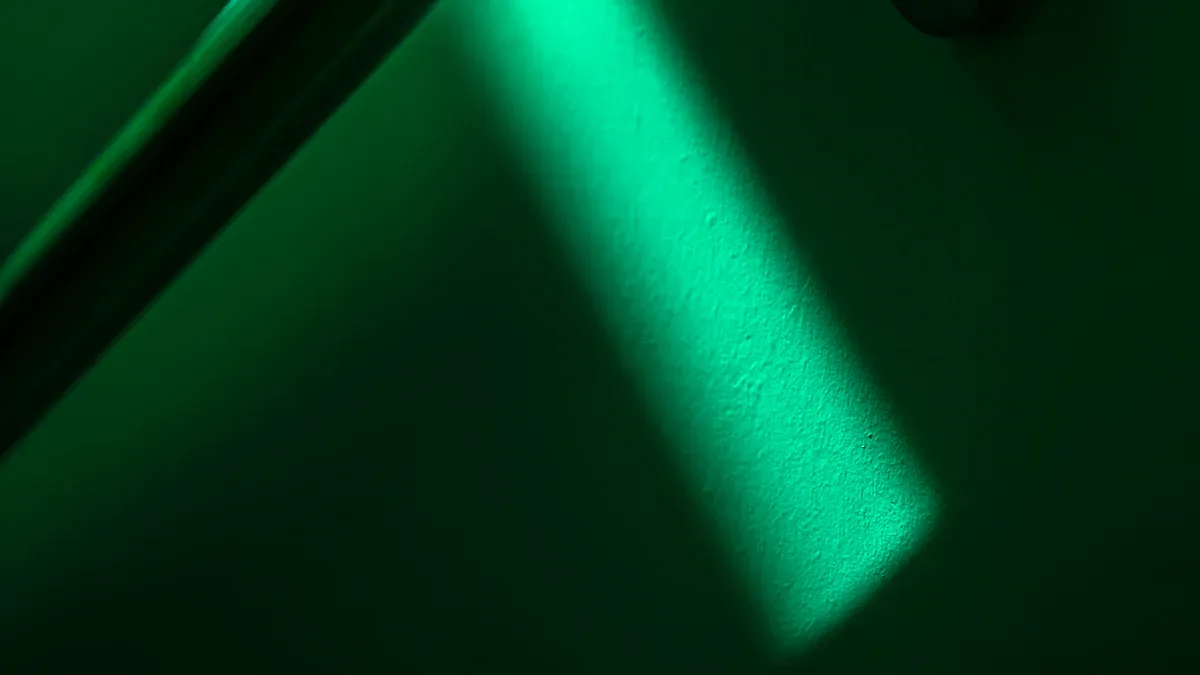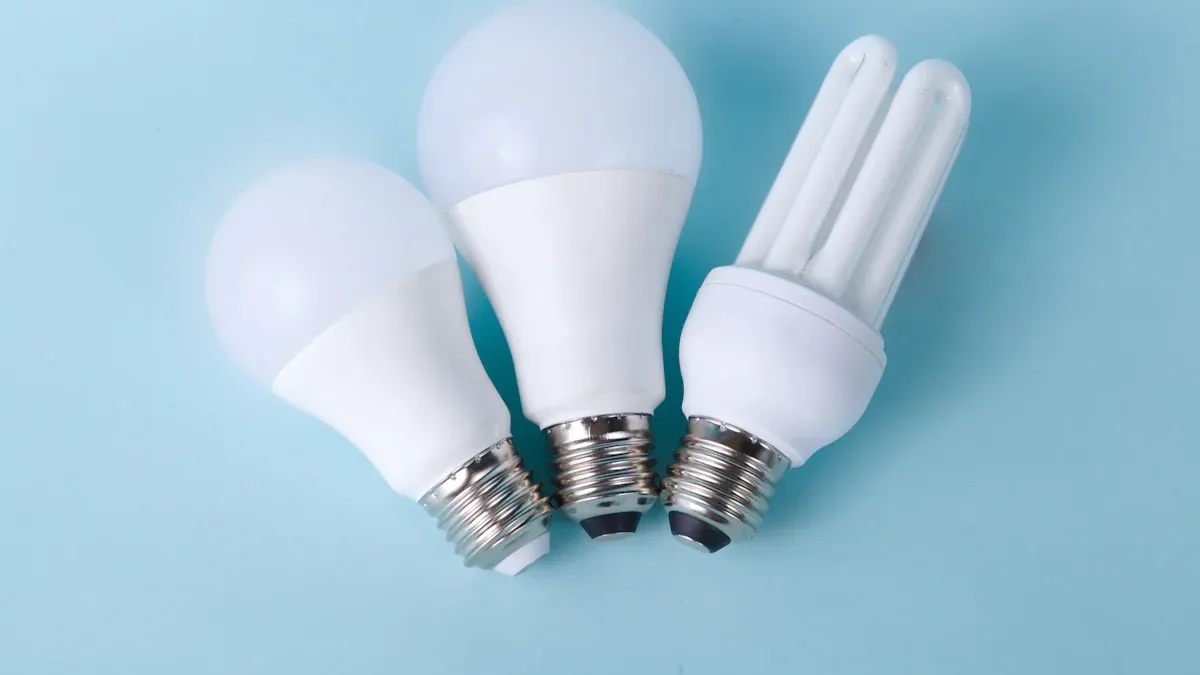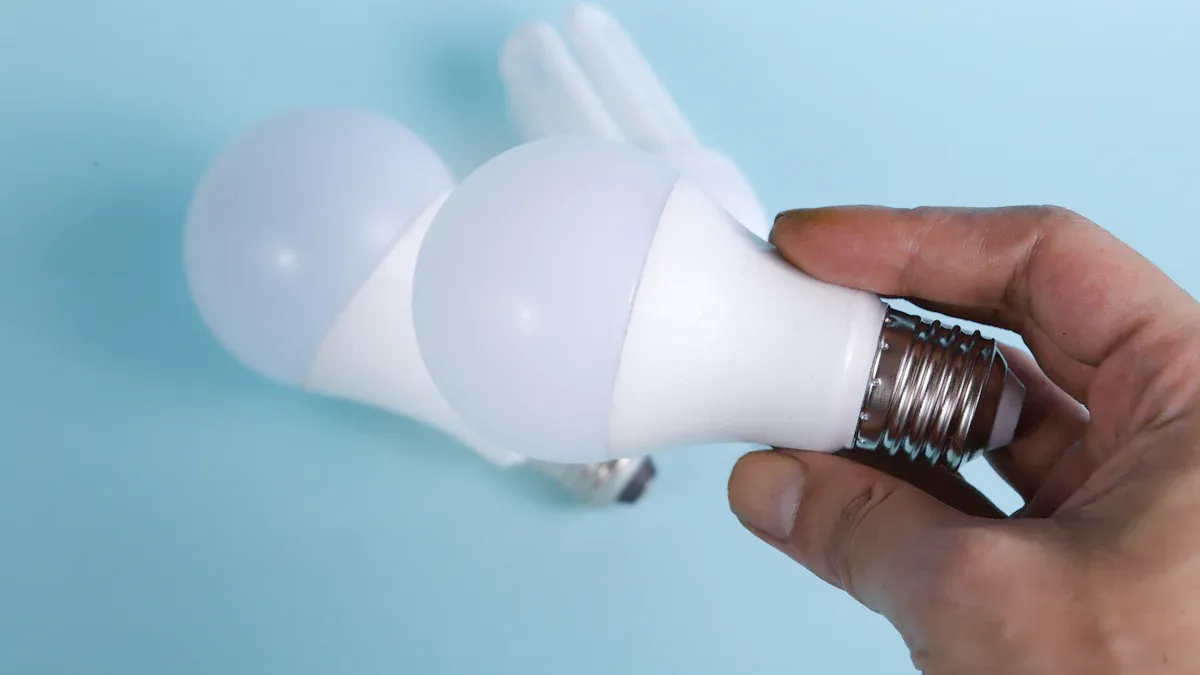How to Install and Operate Type A LED Tubes Without a Ballast

You may wonder how to Install and Operate Type A LED tubes without a ballast. Most of these Product tubes require a ballast, but you can use them without one if you bypass it properly. Safety is crucial, so always turn off the main power before starting. Mistakes during setup can be dangerous, such as using the wrong sockets or touching live pins. Common issues people face include:
Electric shock from live voltage in sockets
Wiring confusion due to different Product schematics
Fire hazards from incorrect socket use
Accidentally installing fluorescent tubes in ballast-bypass fixtures
Make sure your Led Light is compatible with your wiring and that your setup is correct. If you’re unsure, consult a professional to keep your Home safe. For more information, visit our About Us page.
Key Takeaways
Always turn off the power first. This helps you avoid electric shock. It also keeps you safe when installing LED tubes.
Check if your Type A LED tube fits your fixture's ballast. This stops problems during installation. It also saves you from wasting money.
Take out the ballast and rewire the fixture the right way. Use non-shunted sockets for safety. This helps your LED tubes work well.
Use the correct tools and follow the instructions from the manufacturer. If you are not sure, call a licensed electrician for help.
Test your LED tubes after you install them. This helps you find problems early. You can then enjoy bright and energy-saving lights safely.
Type A LED Compatibility

What Is a Type A LED Tube
There are many LED tubes in stores, but they do not all work the same. Type A LED tubes are different because they can use the ballast already in your light fixture. These tubes are called "plug-and-play" since you just take out the old fluorescent tube and put in the new LED one. You do not need to change any wires if your ballast matches. This makes Type A tubes a good choice for fast upgrades to energy-saving LED tube light options.
Here’s a simple table showing how Type A tubes are different from other types:
LED Tube Type | Electrical Compatibility | Installation Requirements | Key Characteristics |
|---|---|---|---|
Type A | Works with existing ballast | Plug-and-play, no rewiring | Easy install, depends on ballast |
Type B | Needs ballast bypass | Rewiring needed | More efficient, no ballast needed |
Type AB | Works with or without ballast | Flexible, check specs | Combines A and B features |
Type C | Uses external driver | Driver install, complex | Advanced features, dimming |
Ballast Requirements
Type A LED tubes need a ballast to work. Most of these tubes are made to fit with common electronic ballasts. You do not have to do extra wiring. Just make sure your fixture uses an electronic ballast, not a magnetic one. These tubes are made to replace T8 LED tubes that use electronic ballasts. If you do not know what kind of ballast you have, look at the label on your fixture or ask an electrician.
Tip: Always check the tube box or the manufacturer's website for a list of ballasts that work. This helps you avoid problems later.
LED Tube Compatibility Check
Before you buy or put in a new tube, you need to check if your ballast matches the tube. If you use a Type A LED tube with the wrong ballast, the tube might not turn on or could stop working soon. The main risk is wasting money on a tube that does not work. You usually will not have fire dangers or damage your fixture, but you could end up with a light that does not work and no refund.
Here is what you should do:
Look for a list from the tube maker that shows which ballasts work.
If your tube turns on and works, your ballast is probably fine.
If the tube does not work, it is likely not compatible, and you may need to try another tube or think about a ballast bypass.
Remember, checking if your tube and ballast match saves you time and money. It also helps you get the best use from your new T8 LED tubes.
Install and Operate Type A LED Tubes

Safety Precautions
Before you start to install and operate your new LED tubes, you need to think about safety first. Working with electricity can be risky, so you must take the right steps. Always turn off the power at the breaker before you touch any wires or start the installation. Use a non-contact voltage tester to make sure the fixture is not live. Place a note on the switch or breaker box so no one turns the power back on while you work.
You should also check for important safety certifications on your LED tubes. These marks show that the tubes meet strict safety standards and help protect you from shock or fire hazards. Here’s a quick table to help you know what to look for:
Certification | Region/Market | Why It Matters for LED Tubes |
|---|---|---|
UL | United States | Proves electrical safety and reliability, especially for direct wire tubes |
ETL | United States | Shows quality and safety, similar to UL |
CSA | Canada/North America | Ensures safe installation and operation |
CE | European Union | Confirms safety and EMC compliance |
VDE | Germany/Europe | Checks for safety and quality |
BS | United Kingdom | Meets British safety rules |
UKCA | United Kingdom | UK-specific safety mark |
GS | Germany/Europe | Extra safety check, voluntary |
Tip: Always look for UL or ETL marks if you live in the US. These are the most important for safe LED tube installation.
Tools and Materials
You do not need many tools for this job, but having the right ones makes the install and operate process much easier. Here is a list to help you get ready:
Non-contact voltage tester
Screwdriver (flathead and Phillips)
Wire cutters and strippers
Wire connectors (wire nuts)
Electrical tape
Ladder or step stool
Safety glasses and gloves
Your new T8 LED tubes
Wiring diagram for your LED tube installation process
If your fixture has a starter, you may need to remove or replace it. Some LED tubes come with a special starter, so check the instructions that come with your tubes.
Installation Steps
Now you are ready to install and operate your LED tubes. Follow these steps for an easy installation process:
Turn Off Power
Go to your breaker box and switch off the power to the lights. Double-check with your voltage tester to make sure the fixture is safe.Remove the Old Tube
Twist the old fluorescent tube 90 degrees and gently pull it out. Set it aside carefully.Remove the Ballast (If Needed)
If you want to install and operate Type A LED tubes without a ballast, you need to remove the ballast. Open the fixture and find the ballast. Cut the wires going to the ballast and take it out. Keep the wires from the power source and the sockets.Rewire the Fixture
Connect the power wires directly to the tombstone sockets. Most T8 LED tubes need non-shunted sockets for direct wiring. Use the wiring diagram from your LED tube package. Twist the wires together and cover them with wire connectors. Wrap with electrical tape for extra safety.Remove or Replace the Starter (If Needed)
Some fixtures have a starter. If your LED tube needs a special starter, swap it out now. If not, just remove the old starter.Install the T8 LED Tube
Line up the pins of your new LED tube with the sockets. Push the tube in and twist it until it locks in place.Restore Power and Test
Turn the breaker back on. Flip the light switch. Your new LED tube should light up right away. If it does not, check the wiring and make sure the tube is seated correctly.
Note: If you feel unsure about any step, stop and call a licensed electrician. Safety always comes first when you install and operate LED tubes.
You can now enjoy bright, energy-saving light from your new LED tubes. This method works for most T8 LED tubes, but always check your tube’s instructions for any special steps. When you install LED lamps this way, you get rid of the old ballast and make your lighting system simpler and more reliable.
Bypass a Ballast
Performing a Ballast Bypass
Ready to bypass a ballast? You can do this safely if you follow the right steps. Start by turning off the power at the circuit breaker. Never skip this step. Use a voltage tester to double-check that the fixture is not live. Safety comes first every time you work with electricity.
Here’s a simple checklist for performing a ballast bypass:
Turn off the power at the breaker.
Use a voltage tester to confirm the power is off.
Remove the cover from your light fixture.
Find the ballast inside the fixture.
Cut the wires going to the ballast. Remove the ballast completely.
Strip about half an inch of insulation from the ends of the wires.
Connect the wires from the power source directly to the tombstone sockets. Make sure you follow the wiring diagram from your retrofit led tube package.
Use wire nuts and electrical tape to secure all connections.
Double-check that all wires are tight and covered.
Replace the fixture cover.
Tip: Always follow the instructions from your LED manufacturer. Some direct wire led tubes need a special wiring setup. If you feel unsure, call a licensed electrician.
You must use proper wiring insulation and secure all connections. This keeps your installation safe and meets the National Electrical Code (NEC) standards. Some local codes may have extra rules, so check before you start. Using the right tools and materials helps you avoid problems later.
Wiring the Fixture
Wiring the fixture after you bypass electronic ballasts is a key step. Most tombstones can handle up to 600 volts, which is more than enough for direct wire led tubes. You need to connect the line (hot) wire to one side of the tombstone and the neutral wire to the other. This setup lets your led tube get power directly, without the ballast in the way.
Here’s how you can wire the fixture for a double-ended ballast bypass retrofit:
Remove all wires connected to the old ballast.
Connect the black (hot) wire from your power source to one end of the tombstone.
Connect the white (neutral) wire to the other end of the opposite tombstone.
Mark the line and neutral sides on the fixture. You can use a sticker or write on the metal pan. This helps you and others avoid mistakes later.
Make sure you use non-shunted tombstones for most direct wire led tubes. Shunted tombstones can cause problems or even damage your led tube.
Note: Always check the instructions for your retrofit led tubes. Some brands have different wiring needs. If you skip this, your installation might not work or could be unsafe.
Some people find that sockets do not fit well or that tubes are hard to install. Take your time and make sure everything lines up. If you have trouble, check the socket type and try again. A successful ballast bypass depends on careful wiring and good connections.
Testing the LED Tube
After you finish the ballast bypass, you need to test your led tube. This step makes sure your installation is safe and your lighting works as it should.
Follow these steps to test your led tube:
Check for Physical Damage: Look at the tube for cracks, dents, or other damage. Do not use a damaged tube.
Inspect the Assembly: Make sure all parts are tight and nothing is loose or missing.
Look at the LED Chips: Check for any discoloration or uneven brightness. This could mean a problem with the tube.
Check the Housing: Make sure the tube’s housing is sealed and not broken.
Verify Certifications: Look for safety marks like UL or CE on your tube. These show your tube meets safety standards.
Restore Power: Turn the breaker back on.
Test the Light: Flip the switch. Your led tube should light up right away. If it does not, turn off the power and check your wiring.
Run an Endurance Test: Let the tube run for a few hours. Watch for overheating or flickering.
Pro Tip: If your tube does not work, check the wiring and make sure you used the right tombstones. Sometimes, a simple fix can solve the problem.
A good test helps you catch problems before they become bigger issues. Always check your work before you finish the job. This way, you get safe, bright light from your new led setup.
Tips and Troubleshooting
Common Mistakes
When you try to replace fluorescent tube light bulbs with LED, you might run into some problems. Many people make the same mistakes, so you can avoid them if you know what to watch for.
You might see your new LED flicker or strobe. This can happen if the wiring is not right or if the LED driver does not work well after you bypass the ballast.
Sometimes, the LED tube does not light up at all. This often means the wiring is wrong or the tube is not compatible with your fixture.
You may notice the light looks dim or yellow after a while. This can happen if the LED gets too hot or if the phosphors inside start to break down.
Some people find the light is not as bright as their old fluorescent tubes. Sometimes, you get only half the light you expect.
If you do not use the right sockets or connect the wires tightly, you could have heat build-up. This can damage your LED and make it stop working early.
Flickering at a high frequency can cause headaches or make you feel dizzy, especially if you are sensitive to light.
If you do not check the wiring, you might end up with uneven lighting. The room can look dark in some spots and too bright in others.
If you see any of these problems after you replace fluorescent tube light bulbs, turn off the power and check your work. Fixing small mistakes early can save you time and money.
Pro Tips for LED Tubes
You want your LED tubes to last a long time and work well. Here are some tips to help you get the best results when you replace fluorescent tube light bulbs:
Always check if your LED tube matches your fixture before you start. Not every tube works with every setup.
If your fixture has an old ballast, think about replacing it or removing it. Old ballasts can cause problems later and cost more to fix.
Make sure your LED tubes have good airflow around them. Heat can damage LEDs, so keep them cool.
Use surge protectors to keep your LEDs safe from power spikes.
If you use dimmers, make sure they work with LED tubes. The wrong dimmer can make your lights flicker or break.
Try not to turn your lights on and off too often. This can wear out the LED parts faster.
Keep your LED tubes dry unless they are made for wet places.
Always follow the instructions from the manufacturer. If you feel unsure, ask a certified electrician for help.
Taking care of your LED tubes helps you save money and keeps your lights bright for years. When you replace fluorescent tube light bulbs the right way, you get safer and better lighting at home or work.
You can upgrade your lights by following a few key steps. First, always turn off the power at the breaker. Next, remove the old ballast and connect the wires as shown in your LED tube guide. Double-check your wiring and use non-shunted tombstones if needed. Remember, safe disposal of old ballasts protects the environment from harmful chemicals. When you finish, you get brighter, safer, and more efficient lighting. If you ever feel unsure, ask a pro for help. Enjoy your new LED setup! 🚀
FAQ
Can you use Type A LED tubes without removing the ballast?
You can, but only if you bypass the ballast first. Type A tubes need a direct connection to power when you remove the ballast. Always check your tube’s instructions before you start.
What happens if you install a Type A LED tube with the wrong ballast?
The tube might not turn on or could flicker. Sometimes, it may stop working early. You will not damage your fixture, but you will waste time and money.
Do you need to change the sockets when bypassing the ballast?
Most Type A LED tubes work with non-shunted sockets after a ballast bypass. If your fixture has shunted sockets, you may need to replace them. Always check your tube’s wiring guide.
Is it safe to bypass a ballast yourself?
If you know basic wiring and follow safety steps, you can do it. If you feel unsure or nervous, call a licensed electrician. Safety always comes first.
How do you know if your LED tube is compatible with your fixture?
Check the tube’s box or manual for a list of compatible ballasts or wiring setups.
If you cannot find this info, visit the manufacturer’s website or ask customer support.
See Also
Complete Instructions For Switching Fluorescent Tubes To LEDs
Measuring And Choosing The Perfect LED Tubes For Fixtures
Accurate LED Tube Measurement Tips For Proper Replacement
Stepwise LED Lamp Connection Guide For Various Fixture Types
Ultimate Guide To Fluorescent To LED Tube Conversion Process

